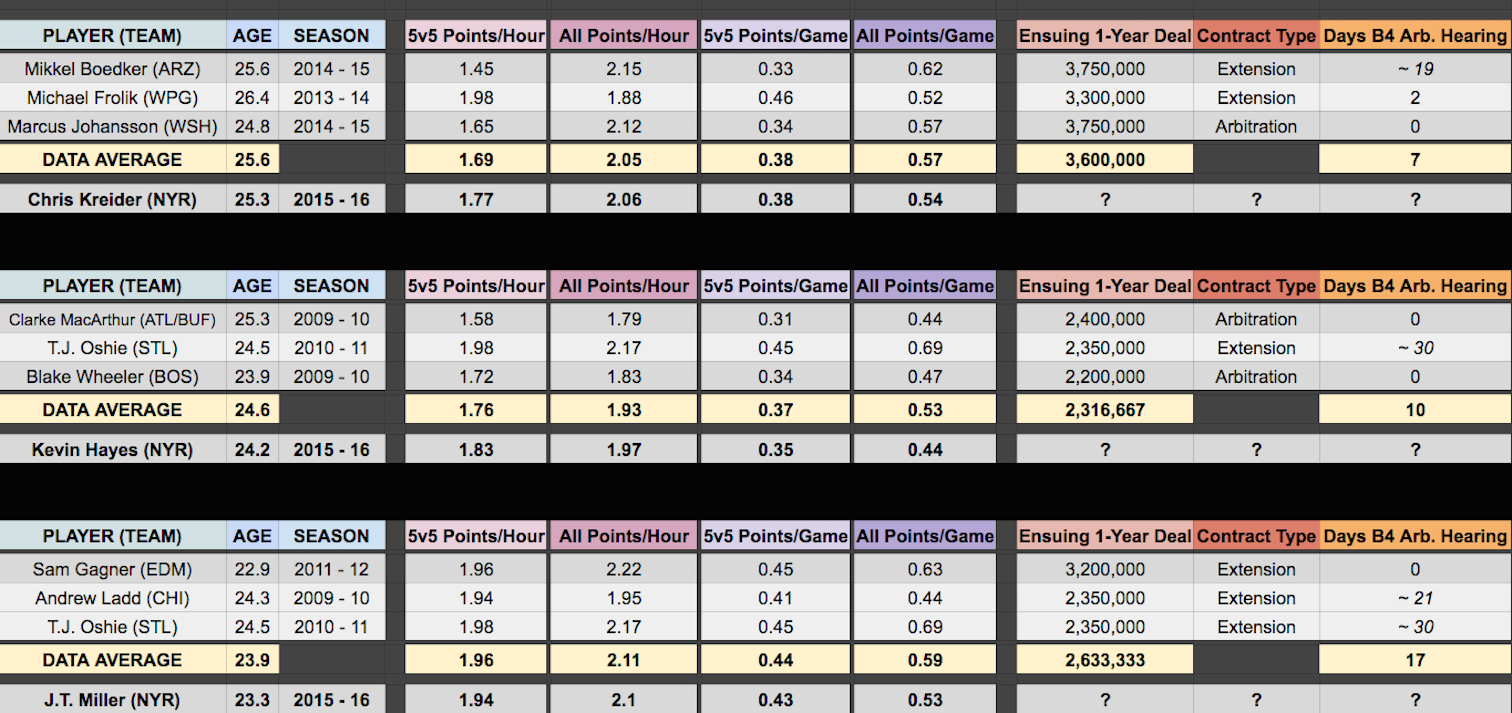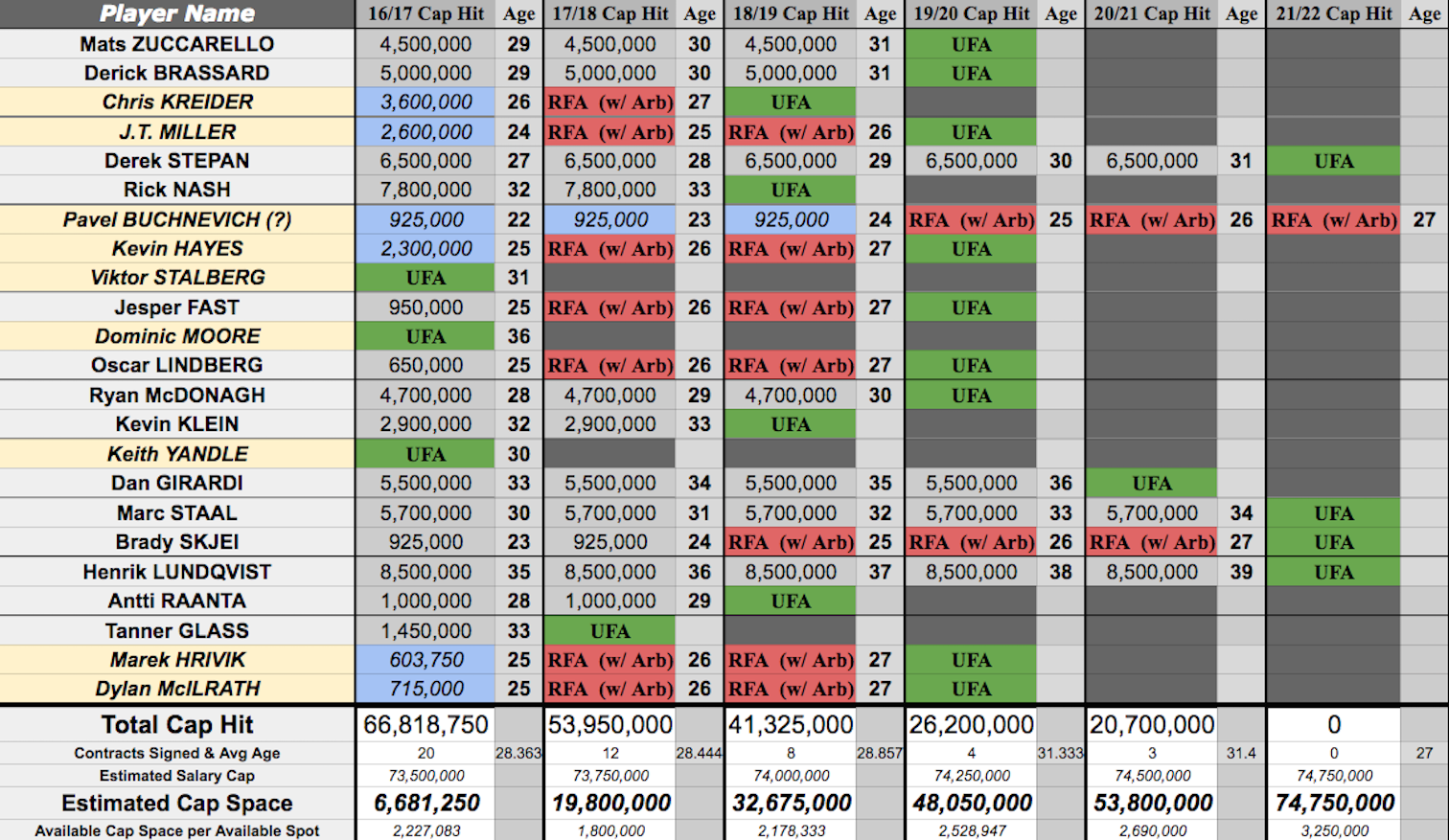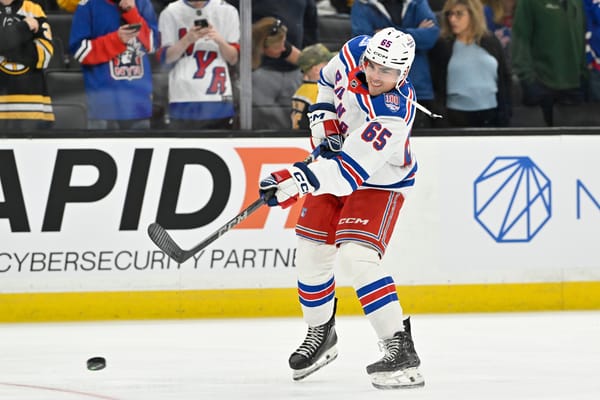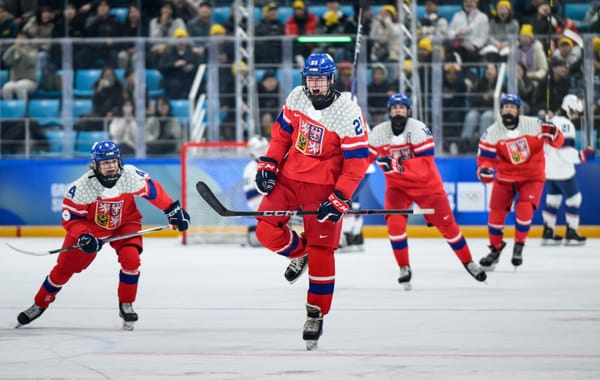Reload, Retool, or Rebuild: Part Three (Crunching the NYR Cap)
<em> In this installment, we’re going to assess some of the relevant salary cap dynamics when evaluating the Rangers’ options and/or possible mentality when it comes to the off-season. There are endless hypothetical scenarios that could take place this summer, and without a crystal ball, the least w
This is part three of an ongoing series where we examine what the Rangers will be doing this summer. Here's part one and here's part two in case you need to catch up.
Let's start with the New York Rangers' contractual construct, as of now (assuming a $73.5 million salary cap in 2016-17, which would be a $2.4 million increase).

With the two-year extension of backup goaltender Antti Raanta, and the optimistic-yet-realistic assumption of Pavel Buchnevich signing a maximum entry-level contract this summer; the Rangers are looking at a total of $57 million tied up into eight forwards, five defensemen and two goalies. This would leave anywhere from $14 to $17 million available to fill the remaining eight or nine roster spots, depending on the 2016-17 salary cap.
How Much Will The NHL Salary Cap Rise or Fall Next Season?
In Mid-March, the NHL projected that next season’s salary cap could rise up to $74 million (which would be a $2.6 million increase from this season). However, since that estimation, not only were all Canadian teams eliminated from the postseason; but big-market, big-rating magnets Chicago, Detroit, Los Angeles & New York were eliminated in the first round of the tournament.
The cap is directly rooted in league's annual revenue, as well as the inherent strength of the Canadian dollar; so this could mean a more bearish projection than March’s initial optimism, considering the playoffs represent the prime gorge of NHL revenues.
There’s also the issue of whether or not the players’ association will opt for the 5% cap inflator, which was a predicated assumption in the $74 million estimate (more on that process here).
For a team like the Rangers, even a plateauing salary cap would feel like the noose tightening.
Not only does the roster include some large chunks of low-quality assets (Dan Girardi, Tanner Glass and Marc Staal stand to account for 17% to 18% of the salary cap next season); but there’s also four pivotal restricted free agents in Kevin Hayes, Chris Kreider, Dylan McIlrath and J.T. Miller who are due pay raises.
The new cap will be announced in late June.
If you’re general manger Jeff Gorton, every penny counts.
How Much Will The Restricted Free Agents Cost?
All the restricted free agents are eligible for salary arbitration. This means a few things.
First, the classic stalemate of a team low-balling a player, with a standoff possibly leading to a holdout in August, September or farther... is not a possibility for Broadway nor these players. All RFAs can file for arbitration in the first week of July, with a subsequent arbitration appointment scheduled sometime at the end of the month. Therefore any negotiations will be given a hard deadline, which is a leverage favoring the player, not the front office.
Secondly, arbitration is when both the player and team present their cases to a third party as to what the player’s next contract should be. In the proceedings, each side offers comparable contracts of precedent which would apply to the player in question. In the case of player-elected arbitration, the hearing revolves around what the dollar figure should be for a one-year amount. It should be noted these hearings can sometimes bring about bad blood, since the team is often giving point-by-point reasoning why the player isn't as good as he thinks he is.
So we’ve decided to tabulate some comparables of our own as to carve out estimates of what cap figure we can realistically project for each RFA. All of these players were in similar, if not identical, situations as to Hayes, Kreider and Miller; all of them had filed, or had the right to file, for salary arbitration before ultimately receiving a one-year figure.

Here we have estimates of Hayes receiving a tad over $2.3 million, Kreider $3.6 million, and Miller a hair over $2.6 million. That’s a theoretical total of $8.5 million for the trio, cheapest-case scenario, with all three slated to be up for arbitration again this time next spring. Additionally, such a stop-gap approach would essentially be the front office declining the opportunity to re-sign any of the three long-term for cheaper than, say, a year or two from now (as unrestricted free agency is only two to three years away for these budding players).
Marek Hrivik can also file for arbitration, though his estimate would certainly remain grounded to or around his minimum qualifying offer of $603,750. Hrivik has only played four NHL games in his career (all this season), though he is coming off his arguably best career AHL season, where he notched 12 goals, 29 assists and 41 points in 68 games. One would think a one-way contract for that minimum qualifying offer is a good estimate for Hrivik’s approximate retention cost in this exercise.
And finally there’s McIlrath. While it’s obvious the former first round draft pick defenseman had a wonderfully, unexpectedly good season; his raw statistics remain humbling. In 33 NHL games played last season, McIlrath only registered had two goals and two assists for four points. Despite the Rangers’ blogosphere pleading his case, he failed to establish a mainstay in the top-six rotation unless injuries called for him as a cog.
His minimum qualifying offer is $630,000, though an arbitrator could potentially award him a one-year award ranging anywhere from $575,000 (the league minimum) to, say, $800,000 (guesstimating). So for the purpose of this article we’ll assume his one-year arbitration award would be $715,000, the median of that speculative pay range.
Again, signing all five RFAs to one-year extensions, whether it be mutual agreements or arbitration procedurals, would certainly be the cheapest method for maximizing cap space to otherwise spend on the 2016-17 New York Rangers roster. However, it would come at a another price, as it would forgo opportunity to sign players multi-year at a potentially cheaper price than 2017 or 2018.
Let’s take a peek at how the roster would look should all five RFAs be inked to one-year bridge deals:

With 20 roster spots tied up for a $66.8 million cap hit in the stingiest way possible, New York still only has approximately $6.7 million in cap room to deal with the remaining two or three vacant roster spots. Particularly, it would seem as though signing all five RFAs in even the most economically shortsighted way would still mean Keith Yandle (undoubtedly due $5.5 to $7 million per year on the open market) cannot be re-signed without a salary-shedding trade prior to July.
Remember that this is a bare-bones estimate. Kreider -- who is coming off his bridge deal already -- will not be signing another one. Miller will join him, more than likely, since his one-year deal inked last year was also a bridge deal.
Hayes is slotted to receive the Glen Sather bridge deal special (as he's coming off his entry level contract) but it remains to be seen if Gorton will take a similar approach.
Offer-Sheeting?
The Rangers cannot offer-sheet, or "poach," any other team’s restricted free agents. To do so requires a team’s own draft picks to offer as compensation should the player sign the offer sheet and opposing team fail to match the offer. And we all know the Rangers do not possess the quality draft picks this summer, nor the projected cap space, to pose such a risk.
Conversely, the team does in fact seem vulnerable to having Hayes, Kreider or Miller poached themselves. Unsigned restricted free agents can talk to other teams after the minimum qualifying offer deadline (late June) and are free to sign any tendered offer sheets after July 1st. As we saw last June, unsigned goaltender Martin Jones was traded twice in one week due to this very dynamic. (For more on the rules of offer sheets in the NHL, this is a good read).
Group 6 Unrestricted Free Agency?
Group 6 UFAs are players that weren’t originally scheduled to become UFAs, but can opt to become so should the following prerequisites culminate at once:
- Over the age of 25
- Three-or-more professional seasons of hockey in their career
- Less than 80 NHL games in their career
- Contract is expiring/expired
This means should Hrivik or McIlrath be signed to one-year contracts this summer, they would need to play a minimum amount of games in the 2016-17 season and/or postseason for the Rangers to maintain their rights beyond July 1, 2017 (75+ games for Hrivik, 42+ games for McIlrath).
Pavel Buchnevich and The Bonus Cushion?
The NHL bonus cushion is a set amount where each team has a hard ceiling on how many potential performance bonuses they can have on the roster at once. The cushion is 7.5% of the salary cap, meaning it will be anywhere from $5.325 to $5.55 million next season, depending on the cap’s adjustment.
Additionally, NHL entry-level contracts have a maximum performance bonus allowance of $2.85 million, which Hayes received in 2014, and what Buchnevich would surely get should he finally come to Broadway.
If this is the case, the Rangers would only be allowed to take on $2.475 to $2.7 million in non-Buchnevich performance bonuses throughout the rest of the roster. As such, then that would mean yet another chink in the proverbial armor as far as luring top-tier free agent rookies like Drake Caggiula or Jimmy Vesey to come to New York, as players like that would also command the maximum performance bonus structure a la Buchnevich and Hayes.
The August Buyout Window?
In the Collective Bargaining Agreement, it states that any time a team has two or more restricted free agents file for arbitration in July, the team is entitled to a second opportunity to buyout contracts in August, in addition to the conventional window in late June. Considering the Rangers have five players apt to file, this is a very good bet. Mind you, even if all players’ are re-signed prior to any arbitration hearings, the team still maintains the August buyout window.
This buyout window is NOT the compliance buyout window offered for the two years post-CBA. Any buyout taken now will come with typical cap penalties.
Concerning Rick Nash's Tradability:
"If the Player is Traded or claimed on Waivers prior to the no-Trade or no-move clause taking effect, the clause does not bind the acquiring Club. An acquiring Club may agree to continue to be bound by the no-Trade or no-move clause, which agreement shall be evidenced in writing to the Player, Central Registry and the NHLPA, in accordance with Exhibit 3 hereof." - Section 11.8 of the NHL CBA
Rick Nash was acquired via trade in 2012. Therefore, unless he and former Rangers general manager Glen Sather negotiated for his Columbus-born No-Trade Clause (which would have kicked in July 1st, 2015) to remain intact... Nash can be traded freely by the Rangers. We've yet to come across any media confirming nor denying this possibility, but the legendary shrewdness of Sather doesn't exactly make us think of him voluntarily handing a player contractual leverage with cookies and a warm glass of milk, now does it?
Conclusion:
So before insinuating the possible mindsets of the New York Rangers' strategic direction this off-season (reloadIng, retooling or rebuilding), there are some interesting factors at play even before free agency begins. Stay tuned for Part Four, where we’ll begin analyzing what a "reload" might look like, should the front office merely scratch the surface of an off-season overhaul this summer. Stay tuned.
Note: In previous publications, I had labeled Hrivik and McIlrath as RFAs without arbitration rights. This was a clerical error on my part and I apologize for the bad information.
Previous Articles:




